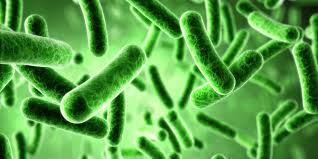Salmonellosis is a zoonotic disease caused by Salmonella bacteria. Zoonosis is a disease that may be transmitted from animals to humans and vice versa. Salmonella bacteria often contaminate food and drink. It is proven by a case report from the Indonesian One Health University Network (INDOHUN) that Salmonella is ranked third as the most cause of food-borne diseases. Salmonellosis is a disease that has become a worldwide problem. Salmonella bacteria are cause of acute and chronic diarrhea leading to death in animals and humans. Salmonella bacteria usually infects in places with bad hygiene. The source of infection from these bacteria can be through feces from carrier animals and humans and through contaminated drink and food by Salmonella bacteria.
There are occurrences of salmonellosis in humans nowadays. Salmonella typhi is a species of bacteria that often causes important health problems in humans. Salmonella typhi is a cause of typhus. Every year there are always cases of typhoid fever leading to death reported globally, including in Indonesia. Salmonellosis in animals is an infectious disease that greatly influences commercial poultry production, for example in broiler farms. In commercial poultry, bacteria that often infect the animals include Salmonella pullorum, Salmonella gallinarum, Salmonella typhimurium, and Salmonella enteritidis. Salmonellosis in broilers can cause huge economic losses, because it causes has high mortality rate, especially in chicks. In adult chickens, it only shows clinical signs and does not cause death, but it makes them carrier of Salmonella. In addition to horizontal transmission through direct or indirect contact with animal carriers or ingredients that contain Salmonella, it can also be transmitted vertically through infected chicken eggs. Salmonella can also contaminate chicken meat, this is due to poor sanitation on farms or poultry slaughterhouses (RPA). Meat can also be contaminated by water from a chicken meat processing plant.
Regarding these problems, it is necessary to control the infection of Salmonella bacteria. It can be done by spraying disinfectant to infected cages. It will improve the safety. Salmonellosis can be controlled by using chicken seedlings and Salmonella- free feed, as well as with good environmental sanitation around the farm. Counseling must be done to farmers, traders, industry and the general public, in order to know the importance of sanitation and hygiene in food handling to avoid Salmonella contamination. Efforts to get ASUH (Safe, Healthy, Whole, and Halal) and Salmonella-free animal food products is a shared responsibility of government, producers and consumers.
Author: Freshindy Marissa Wibisono
(Postgraduate School Veterinary Student of Universitas Airlangga, Veterinary Disease and Public Health Program)





